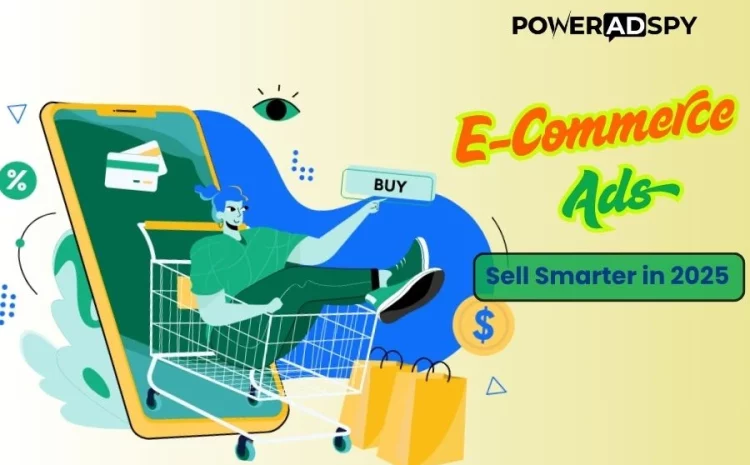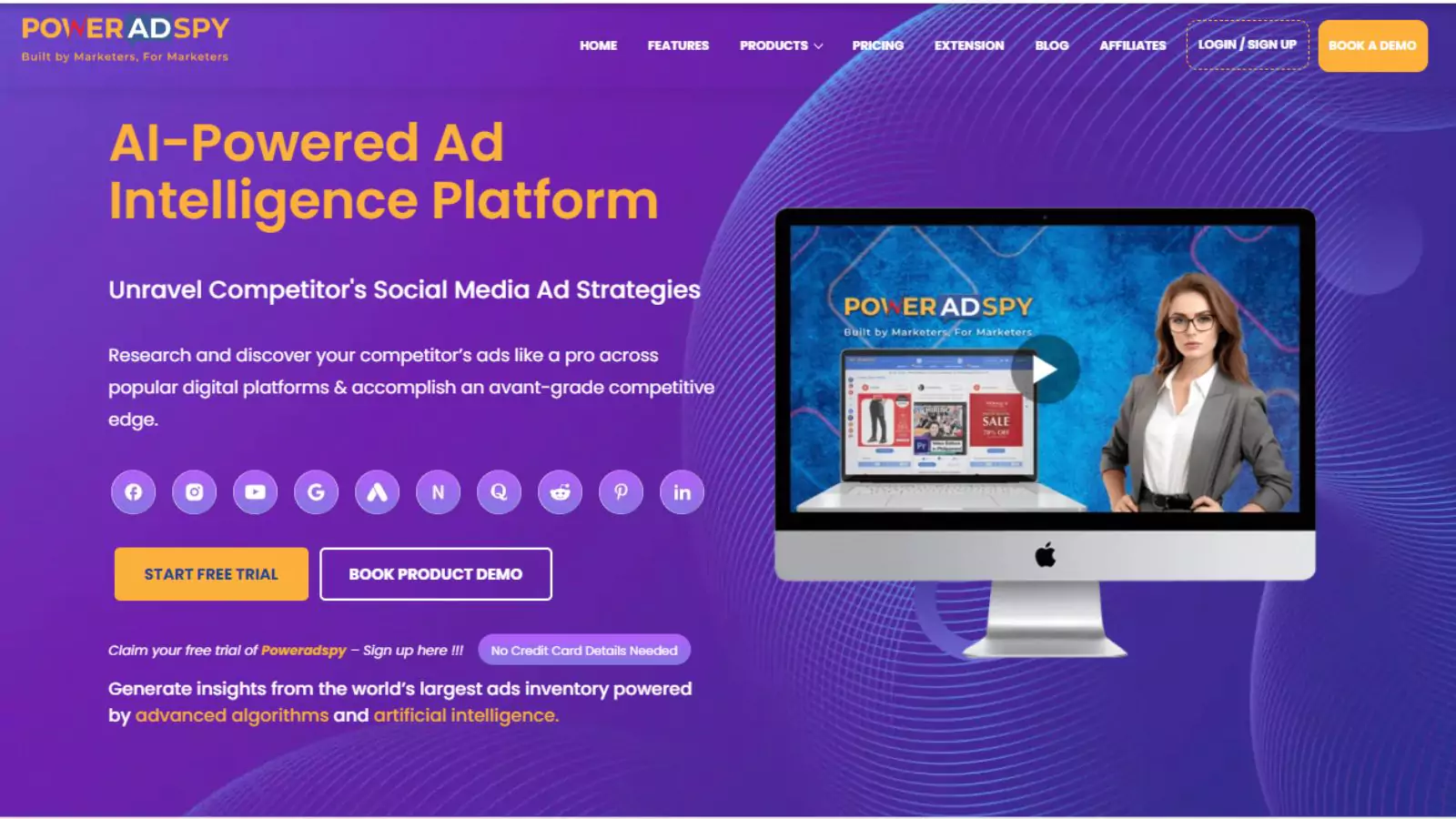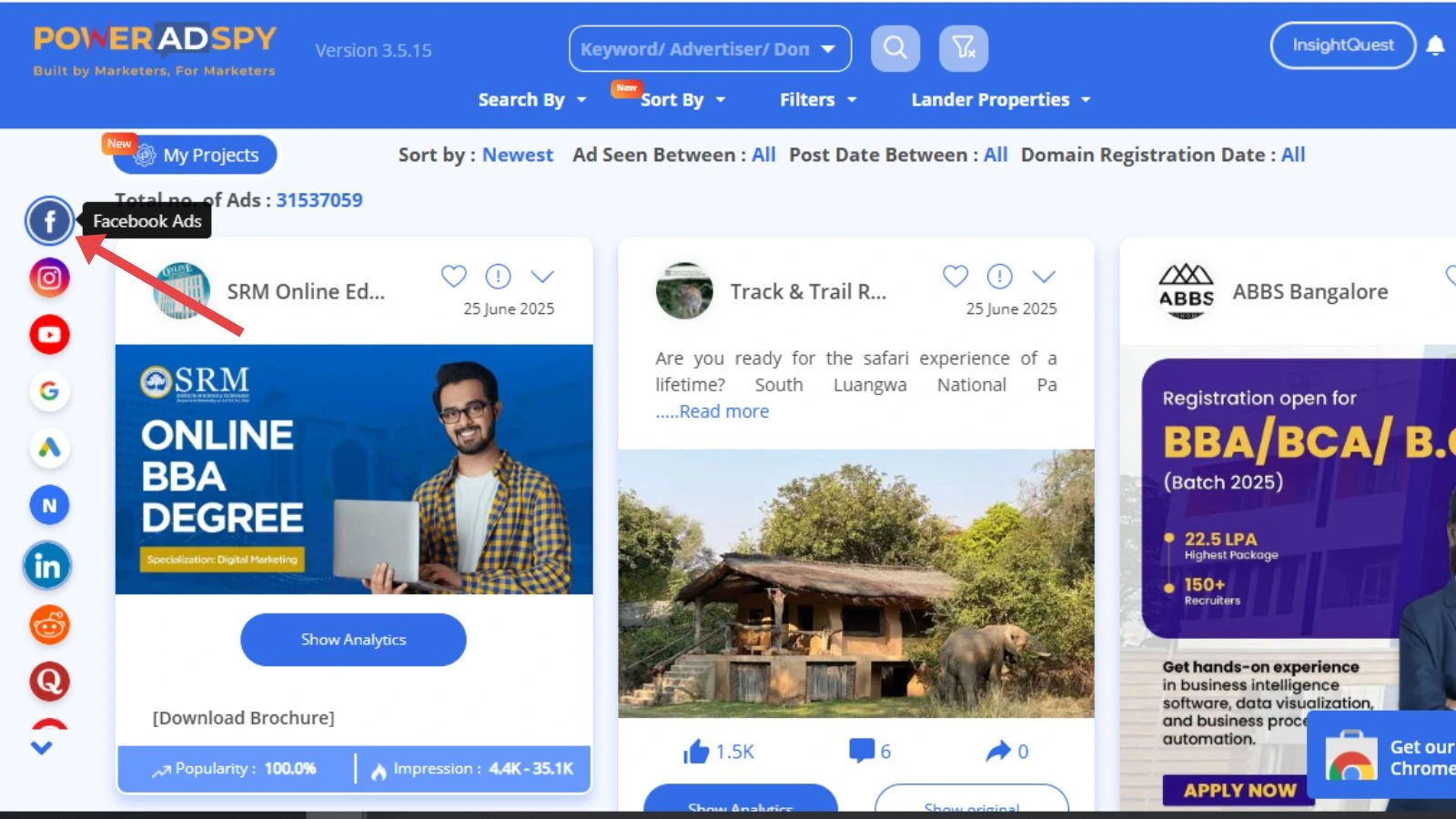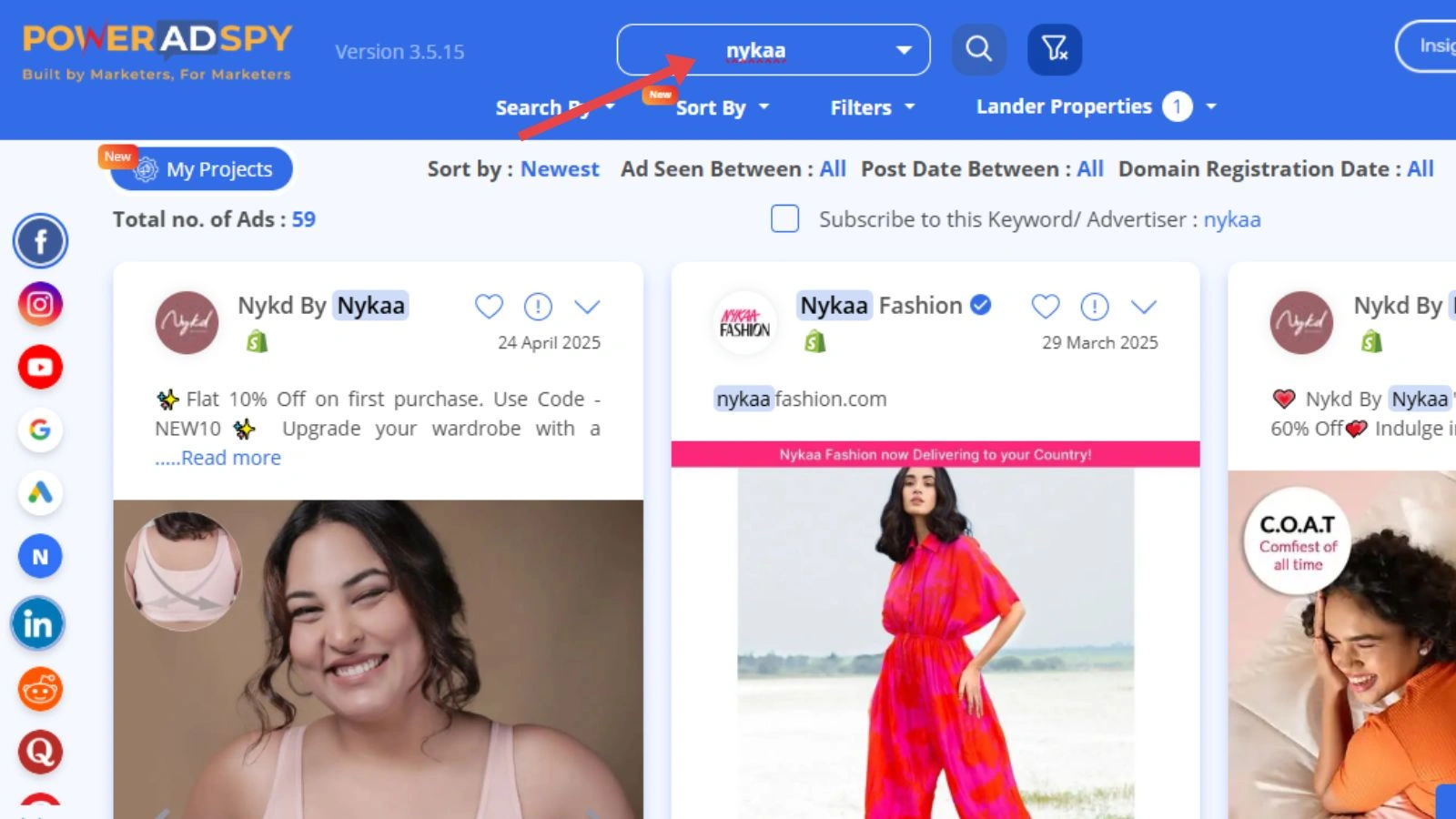The Beginner’s Guide To E-Commerce Ads: Sell Smarter In 2025
If you have an online store, you have likely come across e-Commerce ads. These are simply online advertisements that help businesses sell their products on websites and apps like Google, Facebook, and Instagram.
The main idea is to get your products seen by customers at the ideal moment in this guide. We will explain it in a way that is easy to understand even if you are new to this. You will know- how to use these ads well.
In a hurry? Listen to the blog instead!
What Are E-Commerce Ads?
In basic terms, e-commerce ads are like paying to put up signs for your online shop in places where a lot of people hang out online.
These signs can be pictures, videos, or just words showing what you sell. They pop up on websites like Google ( when someone searches for something you sell).
Or on social media like Facebook and Instagram. (while people are looking at their friend’s posts).
The whole idea is to get more eyes on your products and help you sell more stuff. From your online store without needing a physical shop.
How E-Commerce Facebook Ads Changed The Game?
What makes Facebook super effective is that you can be very specific about who sees your ads.
It’s like this: instead of showing your ads to everyone, Facebook lets you choose to show them only to people who are likely to be interested in what you are selling.
You can pick them based on things like.
- What they are interested in: do they like pages about hiking, cooking, or gaming?
- Their age and gender: are they young women, older men, or a specific age group?
- What they have done online: have they recently looked at workout clothes on another website?
So, if you sell gym clothes, you can tell Facebook to show your ads specifically to people who follow fitness accounts or who have recently bought workout gear online.
This means your ads go to the right people, increasing the chances they will buy from you.
Best E-Commerce Advertisement Platforms
Facebook Ads, Instagram Ads, Google Ads, YouTube Ads, TikTok Ads, and Pinterest Ads offer the best e-commerce advertisement platforms.
Facebook and Instagram are excellent choices when it comes to visual product promotions and the ability to target a specific audience.
Google ads assist you in displaying your products when others are searching online.
YouTube Ads are effective in demonstrating a product and telling a story.
TikTok Ads are loved when it comes to short and catchy videos that can easily go viral and when it comes to young people.
Pinterest Ads are excellent for fashion, decor, and lifestyle items.
Every platform has its own methods of promoting your e-commerce sales depending on who you are reaching out to and the type of content you want to use. Based on that you can elect the best platform to advertise your e-Commerce brand.
How To Make An Effective E-Commerce Ad?
An effective e-Commerce advertisement should contain a clear picture of the product, catchy lines, and a link to your site. A discount or offer should also be placed where possible. Human beings are fond of offers, and it can trigger urgency in their mind to buy your product.
Creating E-Commerce Facebook Ads Step-By-Step
Step 1 – Open Meta Ads Manager, this is the place where all Facebook e-commerce ads are developed and managed.
Step 2 – Click on Create to start a new campaign, after entering the ads manager click the green “create” button. This will start the process of making new e-commerce ads.
Step 3 – Select your ad objective, facebook asks about the goals you desire. In the case of e-commerce, you have the option of:
Sales – To make a purchase
Traffic – To attract people to your site
Engagement – to get more likes, comments, and shares.
If you are selling products go for sales.
Step 4 – Give a name to your campaign. A simple name like “June T-shirt sale” so you can find it easily later.
Step 5 – Set budget and schedule. Decide how much you want to spend in a day. You can start from low rates of 100-500 a day. Choose if you want the ad to run all the time or just a few days.
Step 6 – Choose your audience. Who do you want to show your ads to? Pick by Age, Gender, Location, and Interests. The more relevant your audience the better your results.
Step 7 – Choose ad placements. Let Facebook decide or pick where your ad shows. Facebook feed, Instagram feed, stories, reels, marketplace.
Step 8 – Create your advertisement. An image or video of the product, including a tagline like ( 50 off today only). Insert a website or product link.
Ensure your product image is sharp and the text is easy to understand.
Step 9 – Add a call to action. Such as shop now, learn more, buy now.
Step 10 – preview and publish. Make sure your ad appears well on browser and mobile before you publish. Your ad will now go live and start showing to your target audience.
Read More
10 Proven Reasons Why Is Pinterest Good for Advertising
13 eCommerce Ads Examples To Create Better Ad Campaigns
7 Tactics For Effective eCommerce Advertising
Analyse What Works (And What Doesn’t)
After your advert is on, you should not be left with the work. This in fact is where smart selling begins to point. The biggest mistake newbies make is creating an advertisement and sitting down and just waiting.
However, you should monitor the performance of the advertisement to optimize and attain better outcomes from them.
Ask Yourself:
Do people click on it?
They remain on your website or not?
If they really purchase from your website?
These numbers are provided by the Meta Ads Manager. It will show you how many people viewed the ad (reach), clicked on the ad (CTR -click-through rate), and what it has “cost you” (CPC – cost per click).
These are not very complicated terms you will adapt within no time once you start seeing results streaming in.
When you get a clear indication that a particular ad is receiving more clicks or sales as compared to the rest, then that is your indication to spend more or deliver more adverts of the same kind.
What To Do In Case Your Advertisement Is Not Performing?
Anyone is not required to have an e-Commerce ad that works great in the beginning. Most effective sellers take some time, only to get what works out. Are you getting results on ads that are on the run? If not, then ask yourself:
Is the image of the product attractive?
Is the caption or headline boring or not clear enough?
Are you aiming at the correct people?
A minor detail such as replacing the photo or modifying the caption can already matter.
Two or three versions of a single advertisement with a different image or headline should be run as a good practice.
This is entitled to A/B testing- a common approach used to experiment with what works out as the best. With time, your advertisements will get better and your sales as well.
What You Can Learn (Off The Competitors)?
There should be nothing wrong with having a look at what the other players are up to as long as you are a newbie in the game.
Smart marketers in fact tend to spy on the placement of shopping ads just to know the sort of offers, designs, or messages that are in trend.
That does not imply imitation, you need to see what works in your area.
For instance:
Which type of photos do other people in their e-commerce advertisements use?
Are they employing humor, urgency, and/or social proof?
Do they have bundle offers or free shipping offered?
This can be done, using an ad spy tool. These tools will enable you to view as many ads as running in your niche without the need to research each and every one of them manually.
Why Choose PowerAdSpy-The Best Ad Intelligence Software?
One popular platform that makes this easy is “PowerAdSpy.” It will allow you to search and filter the advertisements based on keywords, kind of advertisement, platform (such as Instagram, Facebook, etc.), and even the type of interaction with such advertisements.
This has nothing to do with copying the same ideas as your competitors, while it may help you to gain some inspiration. It is more like browsing in a store of your rival- to know what is working, what is not, and how you can do it better and more of yourself.
How To Discover Winning e-Commerce Ads Using PowerAdSpy?
Here are the steps you can follow to use best Facebook ad spy tool to monitor competitors winning ad campaigns.
- Log in to your PowerAdSpy account.
- On the right-hand side, select the advertising platform you want to explore (e.g., Facebook).
- Under Landing Properties, choose E-commerce Platforms to focus on online store ads.
- Go to the Explore section and click the Explore button.
- Browse through the collection of Facebook e-commerce ads from your competitors.
- Analyze these e-Commerce ads to understand what works and get ideas for your own campaigns.
Here you can learn from some of the best e-commerce ad examples to take reference for and replicate their winning strategies in your own campaign.
Mistakes To Avoid In E-Commerce Ads
Although it is an easy process to place ads, the newbies often end up in some traps they can avoid. These are some pitfalls to our mistakes and how to avoid them:
-
An attempt to speak to all
When you make sure that your ad is going to be liked by everyone then it will not work at all. Focus on those people who have a higher chance of purchase.
One does not have to spend money advertising gym wear to people who are interested in gardening because Facebook simplifies this.
-
Weak Product Photographs
Out-of-focus, murky, or confusing pictures will instantly put an end to the effectiveness of your ad. Make good quality photos or dirty videos. The last thing you want is to feature your product in the ad.
-
No Call-To-Action or CTA
When your ad only says something like, Check this out and there is no reason to click something or no button, people will just scroll past.
There should always be an advantage (such as a discount or feature), a well-defined button (e.g. Yes, Buy, Now), etc.
-
Quitting Before It Is Too Late
Other advertisements may take 3-2 days to take effect. There is no need to be alarmed on Day 1 that you are not getting something. Let it move in a part, observe it, and adjust according to the outcomes.
Retargeting: Recapture Visitors Who Have Not Purchased
Have you ever gone to an online store, not purchased that product, and then found ads for the same product throughout the Internet?
It is retargeting, the best trick of e-commerce brands.
This is how it happens: a person follows your advertisement, enters the site, and maybe even includes the product in the cart but does not make this purchase.
Retargeting is an ad that reminds a person about coming back to purchase when the same individual sees your ad later.
Facebook takes care of this by providing what is known as the Facebook Pixel which is a simple code that you put on your site and it follows what visitors do.
Create a retargeting campaign to display advertisements to those individuals that:
Visited a Product Page
Added cart
Being seen and not being purchased
Such audiences warm up far better as compared to cold, new users. It is compared to patting a person on the shoulder who already showed his/her interest in what was offered.
It Must Be Mobile-First Thinking
Most individuals will use their phones to watch your advertisements in 2025 and not the computer. That is how you need to think mobile-first.
Vertical videos or square pictures will serve (they are more pleasant to watch and view on mobile).
Make your words concise.
Ensure that your site is mobile (fast download, easy to purchase).
When your mobile advertisement appears good, your chances of making sales are boosted automatically.
Real World Example: Simple Way To Make A Small Store A Sales Machine
To have a practical kind of example, let us assume the following. Let us imagine that you are a seller of handmade candles.
You begin with the small stuff and run a Facebook e-commerce advertisements with a Rs. 300 daily budget. The advert contains:
Your candle is pictured in a warm room with a glowing image
A caption: Rainy day soothing scents- 15 Percent off this week
A Shop Now button on your product page
You also have software, PowerAdSpy, to find out that most brands of candles employ more lifestyle shots rather than plain images of the product- and you also employ them.
After two days, you realize that there were 80 clicks yet only 3 purchases. You adjust the advertisement, to this time reveal a video, of a person opening the candle and sitting it on a bedside table.
Everything changed: now you have 20 sales in 4 days. You are quick at learning. You scale. That is how little steps can result in smart e-commerce development.
Selling Smarter in 2025 – The Takeaway
Every person will find the world of e-commerce advertising intimidating at first but novice-friendly design. Platforms such as Facebook have now made it the least ever to connect your online shop to the apt shoppers.
You need not be an expert in marketing. All you have to do is to know:
How are you going to appeal to them?
Testing and Implementing Quality on the fly
Extend the toolbox. It is not a bad idea to scout and stalk shopping ads in order to find inspiration.
Find out what other people are doing, and do it better, only in your own way.
Whether you are selling clothes, digital downloads, skincare, or something completely different, e-Commerce ads offer you a shortcut to reach more people and sell smarter in 2025.
Frequently Asked Questions (Faqs)
-
Which platform will be best to advertise e-commerce?
When it comes to visual products and thorough targeting, Facebook and Instagram are excellent. The logic behind Google Shopping Ads is that it is displayed when people are already in buying mode. Your product and audience are the determining factors to choose the best one.
-
What is the price to pay for the first ad campaign?
To experiment, start with a little, 100 to 500 rupees daily is affordable. Pumping up your budget as you figure out which advertisements work better.
-
What are some of the measures that enable me to determine whether my e-commerce ad is working?
Monitor the outcomes via the ad manager on a platform (such as Meta Ads Manager). Use performance measures such as clicks, conversions, cost per click (CPC), and return on ad spend (ROAS).




















